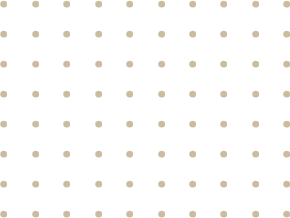1655 Elmwood Ave Suite 220 Rochester NY 14620

Schedule a Consultation
Get help with depression today!
It's important to know that you are not alone.
TMS Therapy Supports Mental Wellness
- Depression
- Lack of Joy
- Sadness and Despair
- Low Mood
- Lethargy
- Insomnia
- Oversleeping
- Social Isolation
- Self-Harm
- Substance Abuse
- Suicidal Ideation
- Alcoholism
Deep TMS
Nexus Neuropsychiatry PLLC offers more than just one type of TMS. In addition to the typical figure 8 coil, we also provide Deep TMS via the BrainsWay H-coils. The decision of which treatment may be better can sometimes be a complex one. During our consultations we will discuss with patients the positives and negatives of each option to ensure you are recommended the most appropriate treatment.
Understanding the Differences Between Conventional TMS and Deep TMS
Transcranial Magnetic Stimulation (TMS) has become a well-recognized treatment for depression and other mental health conditions, offering a non-invasive alternative for individuals who have not found relief with medication or psychotherapy. Within TMS therapy, two primary types are offered:
Conventional TMS and
Deep TMS. While both treatments share key similarities, they differ in important ways that may influence which option is best suited for a patient’s needs.
What’s Similar Between Conventional TMS and Deep TMS?
- Non-Invasive Nature:
Both conventional TMS and Deep TMS are non-invasive procedures that use magnetic pulses to stimulate areas of the brain linked to mood and cognitive functioning. Neither treatment requires surgery, sedation, or hospitalization, making them low-risk options for most patients. - Mechanism of Action:
Both types of TMS use magnetic pulses to stimulate neurons in specific areas of the brain. These pulses activate brain circuits that are underactive in conditions like depression and OCD, helping to "reset" these areas and improve mood and symptoms. - FDA Approval:
Both conventional TMS and Deep TMS have been FDA-approved as safe and effective treatments for major depressive disorder (MDD). Additionally, Deep TMS has received FDA approval for treating obsessive-compulsive disorder (OCD). - Treatment Process:
Patients undergoing either treatment will typically receive daily sessions (Monday to Friday) for four to six weeks. Each session is relatively short, ranging from 20 to 40 minutes, and allows patients to resume their normal activities immediately afterward.
What’s Different Between Conventional TMS and Deep TMS?
- Depth of Stimulation:
The key difference between the two therapies lies in how deeply the magnetic pulses penetrate into the brain. Conventional TMS targets the brain's surface areas, primarily stimulating the prefrontal cortex, which is linked to mood regulation. In contrast, Deep TMS can penetrate deeper layers of the brain, reaching regions that conventional TMS may not effectively stimulate. This deeper reach allows for more comprehensive targeting of brain circuits involved in both depression and OCD. - Coil Design:
Conventional TMS uses a figure-8 shaped coil that produces a more localized stimulation area, directly focusing on a specific part of the brain. Deep TMS utilizes an H-coil, which creates a broader and deeper field of magnetic stimulation, making it more suitable for treating conditions that involve deeper brain structures, such as OCD. - Range of Treatment Applications:
While both treatments are highly effective for depression, Deep TMS has the added benefit of being FDA-approved for the treatment of OCD, a condition that involves deeper brain regions that conventional TMS may not reach as effectively. - Comfort and Sensation:
Some patients report that Deep TMS sessions feel more comfortable due to the broader distribution of the magnetic pulses, while others may find the figure-8 coil of conventional TMS more tolerable. Sensations during both treatments typically include tapping or light knocking on the scalp, but the experience can differ slightly based on the type of TMS.
Why Choose Deep TMS Over Conventional TMS?
Choosing between Deep TMS and conventional TMS depends on a patient’s specific condition, needs, and treatment goals.
Deep TMS
may be the preferred option for several reasons:
- For Treatment-Resistant Depression:
Patients with depression who have not responded to multiple medication trials or conventional TMS may benefit from Deep TMS because of its ability to reach deeper brain structures involved in mood regulation.
- For OCD Treatment:
If obsessive-compulsive disorder is the primary concern, Deep TMS is the clear choice, as it is FDA-approved specifically for targeting the brain regions responsible for compulsions and intrusive thoughts.
- Greater Target Area:
Deep TMS can stimulate a broader and deeper area of the brain, which may be beneficial for individuals whose symptoms may require more extensive neural engagement to achieve the desired therapeutic effects.
- Personal Preference: Some patients may find the sensation of Deep TMS more comfortable due to the coil design and broader magnetic field, making the treatment experience smoother over the course of multiple sessions.
Ultimately, both conventional TMS and Deep TMS are highly effective, non-invasive treatment options. For patients seeking deeper brain stimulation or specific treatment for OCD, Deep TMS offers a powerful alternative with unique benefits. In collaboration with your healthcare provider, you can determine the right approach to help you achieve lasting relief and improved mental health.

Ready To Get Started?
At Nexus Neuropsychiatry, our mission is to promote mental well-being across Monroe County by offering personalized treatment plans to help you attain a fulfilling life. Our team is committed to supporting you in your personal journey toward better mental health, whether you're struggling with anxiety, depression, PTSD, OCD, or another mental health challenge. Local to Buffalo, Syracuse, the Finger Lakes, or Ithaca? Nexus Neuropsychiatry PLLC can help!
Quick Links
Free Assessments
Get Started
Contact
(585) 460-9835
MON – FRI: 5pm – 8pm
SAT – SUN: Closed
*By Appointment Only
1655 Elmwood Ave Suite 220
Rochester NY 14620
Nexus Neuropsychiatry PLLC - All Rights Reserved






